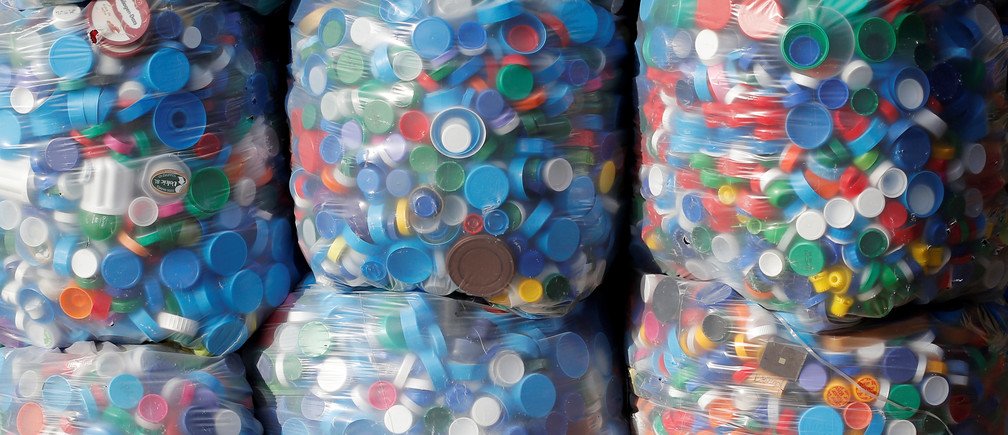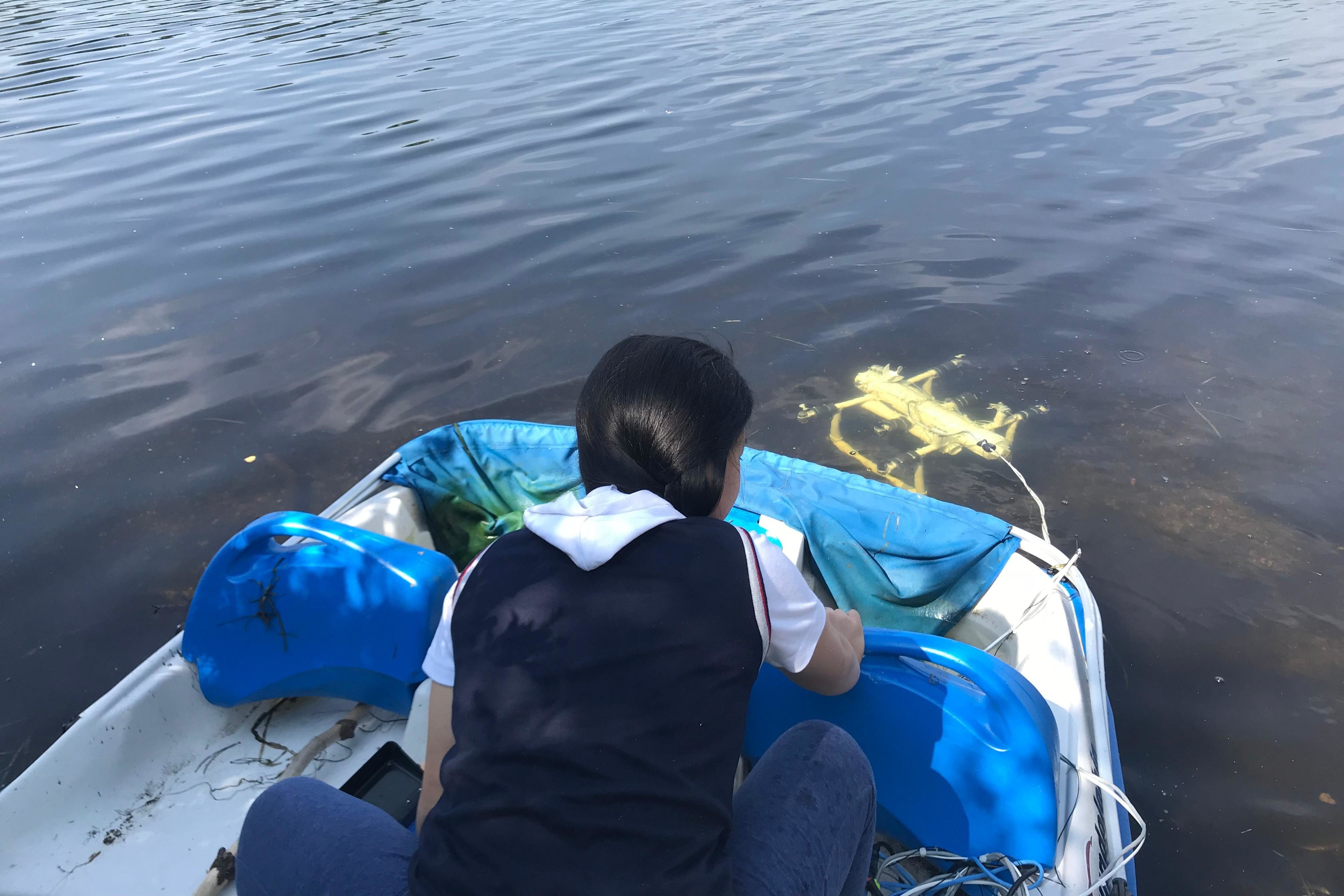
Date: 2025-10-24 Page is: DBtxt003.php txt00016096
Pollution
Plastic in the Environment
This 12-year-old built an underwater robot to fight plastic pollution
Burgess COMMENTARY
Peter Burgess
This 12-year-old built an underwater robot to fight plastic pollution

Bags filled with caps are pictured at the Association Bouchon d'Amour which collects and recycles plastic caps in Martignas-Sur-Jalles near Bordeaux, France, November 23, 2018. REUTERS/Regis Duvignau - RC17D4709770 Around eight million tonnes of plastic ends up in the sea. Image: REUTERS/Regis Duvignau

Environment and Natural Resource Security
Explore the latest strategic trends, research and analysis
An underwater robot that’s the brainchild of a 12-year-old girl from Massachusetts could be deployed someday in the war against marine plastic pollution.
One of the 30 finalists in the Broadcom MASTERS competition (which stands for mathematics, applied science, technology and engineering as rising stars) is Anna Du, a student from Massachusetts.

Image: Broadcom Masters
Her project is called ‘Developing a Smart Infrared Based ROV to Identify Microplastics in Marine Environments’ – ROV stands for remotely operated vehicle. Inspired by a visit to the beach, where she was struck by the volume of plastic littering the sand, Du has developed an underwater vehicle fitted with an infrared camera that can detect plastic resting on the seabed.
The problem of plastic pollution in the ocean is widely acknowledged and well documented. Yet solutions are still only starting to take shape.

Image: World Economic Forum
Each year, around eight million tonnes of plastic ends up in the sea, and by 2050 the amount of plastic pollution in the world’s oceans will outweigh all the fish living there.
The remains of a sperm whale found in Indonesia in mid-November demonstrate the extent of the plastic pollution problem. Almost 6 kg of plastic waste was found in the animal’s stomach, including 115 cups. Plastic has even been found inside freshwater fish living in the Amazon basin. Fish ranging in size from 4cm to almost 30cm, including the parrot pacu, the redhook silver dollar, and the red-bellied piranha, were all found to have consumed plastics and polymers.
Du decided to take part in the competition after seeing the extent of plastic litter at the beach, and how varied it was. “As I was collecting it, I couldn’t help but notice just how much plastics there were,” she says.
Different types of plastic absorb and reflect light in their own unique way, depending on their composition. This is the basis of many automated plastic recycling facilities – light is shone onto the flow of plastic along a conveyor, sensors detect which light is reflected and can group the plastic waste according to type.
The use of light to detect substance composition informed the choices Du made when developing her ROV. Its camera takes photos of the surface of the seabed and compares those images with a reference library she developed based on an online database. That allows it to tell plastics apart from other types of materials.
“The real invention here is the sensing,” roboticist and engineer Dana Yoerger told the Smithsonian Institute.
---------------------------------------------------------------------------------------------------------
Latest Articles
Venice will now start charging tourists an entrance fee
Kate Whiting 04 Jan 2019
Will orbiting missile interceptors mean the weaponization of space?
International Institute for Strategic Studies 04 Jan 2019
3 vital steps to a new gender equality playbook
Carolyn Tastad and Deanna Bass 04 Jan 2019
More on the agenda
Our Impact
Accelerating climate action
Our impact
Explore context
Have you read?
How to stop plastic pollution at source
Plastic is now part of our planet’s fabric – a scientist and archaeologist discuss what happens next
How we can tackle our plastic problem, according to the UN's Head of Environment
Learn about our activities tackling the most significant global challenges through public-private collaboration
Shaping the Future of
- Shaping the Future of Consumption
- Shaping the Future of Digital Economy and Society
- Shaping the Future of Economic Progress
- Shaping the Future of Education, Gender and Work
- Shaping the Future of Energy
- Shaping the Future of Environment and Natural Resource Security
- Shaping the Future of Financial and Monetary Systems
- Shaping the Future of Food
- Shaping the Future of Health and Healthcare
- Shaping the Future of Information and Entertainment
- Shaping the Future of International Trade and Investment
- Shaping the Future of Long-Term Investing, Infrastructure and Development
- Shaping the Future of Mobility
- Shaping the Future of Production
Latest activity
UHC2030 Private Sector Constituency
Future of Construction and Infrastructure
Autonomous and Urban Mobility More initiatives Regional Agenda Environment and Natural Resource Security Climate Change Innovation